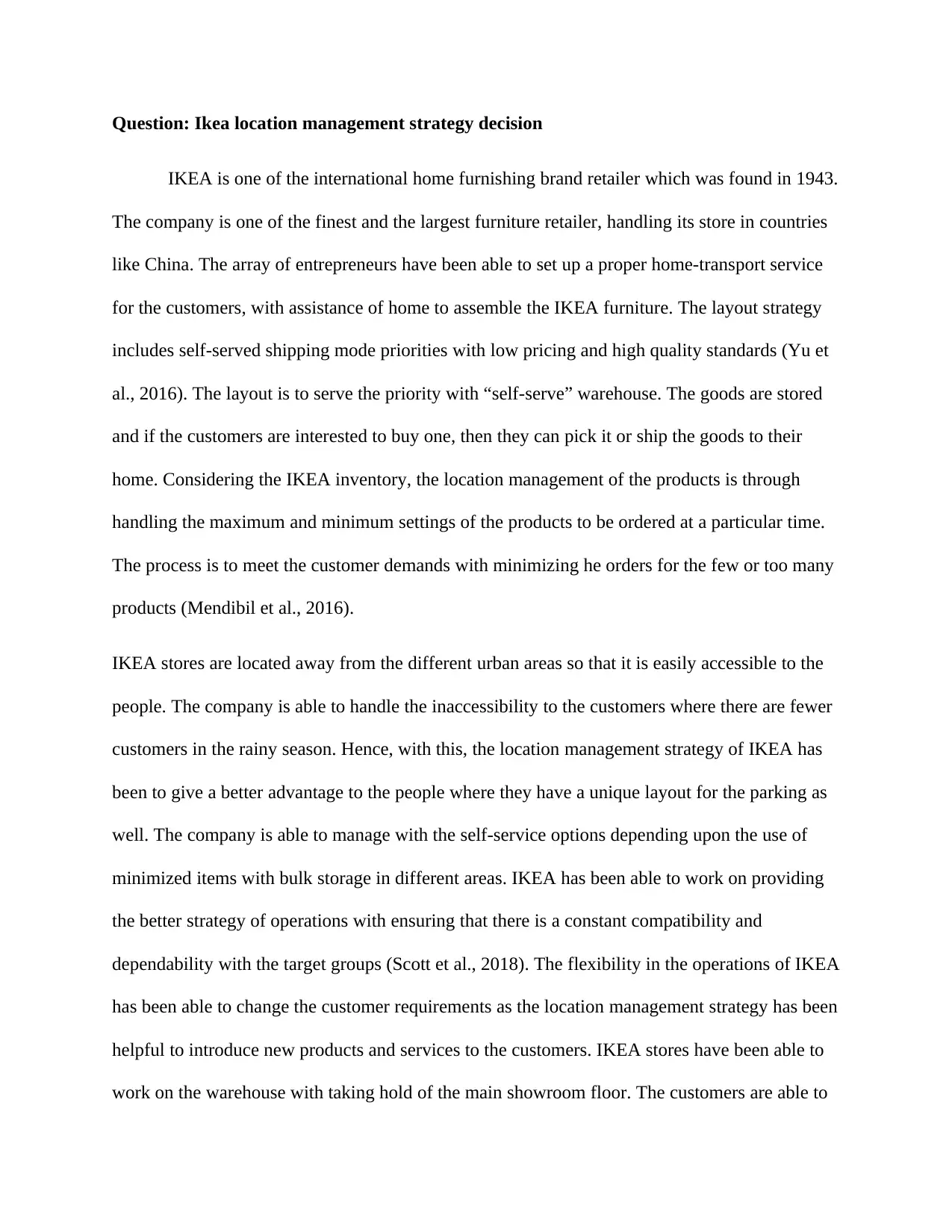Strategic Location Management: A Case Study of IKEA's Global Success
VerifiedAdded on 2023/03/21
|2
|677
|73
Report
AI Summary
This report examines IKEA's location management strategy, highlighting its self-service model, inventory management, and strategic placement of stores in accessible areas outside urban centers. The strategy emphasizes minimizing costs, ensuring product availability, and adapting to customer needs through flexible operations. IKEA's layout, which combines showroom and warehouse functions, allows customers to easily browse and select items. The company focuses on efficient goods flow and customer loyalty by managing inventory and logistics effectively. The analysis also covers how IKEA leverages its location strategy to introduce new products and services, enhancing customer experience and maintaining a competitive edge.
1 out of 2








![[object Object]](/_next/static/media/star-bottom.7253800d.svg)